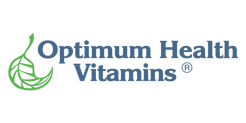 Far from offering a comprehensive encyclopedic compendium of every type of herb available on the market, this article is concerned with the forms of herbs available to you and how you can decide which one would be best for your needs.
Far from offering a comprehensive encyclopedic compendium of every type of herb available on the market, this article is concerned with the forms of herbs available to you and how you can decide which one would be best for your needs.
What are the forms of herbs available on the market and how do they differ?
Loose herbs: These are generally dried, cut herbs that are available in vacuum-sealed bags and can be made into teas or used to prepare tinctures at home. Good herbs to purchase in dry form are those used for large consumption, such as raspberry leaf in times of pregnancy. Roots need to be decocted (boiled for 20 minutes or more) whereas leaf varieties can be steeped like regular tea leaves. Consult a registered herbalist before mixing and matching herbs on your own.
Tinctures: Herbal tinctures are preparations made with alcohol or distilled water and dried or fresh herbs. A tincture is a preparation of these dried or fresh herbal liquids that are consumed in teas, water or juices. One teaspoon taken up to three times daily is often the dosage amounts for herbal tinctures. Before experimenting with tinctures it is important to understand the medicinal value of each herb used.Pure grain alcohol is most often used to make herbal tinctures. Distilled water, white vinegar or glycerin can be used to make non-alcoholic tinctures. Herbal tinctures are essentially a different method of preserving or realizing the full-spectrum of medicinal properties in a herb, including those that are fat-soluble. They are significantly more potent than their loose herb counterparts.
 Dried herb in a capsule: This is exactly what it sounds like. There are some herbs which are just too unpalatable to stomach making tea from and so manufacturers have put freeze-dried herbs inside capsules to avoid the taste and burden of needing to prepare a tea or decoction of them. As you are consuming the entire part of the herb (as opposed to straining it in the making of tea), this will affect the medicinal quality of the herb, requiring you to take less than if you were steeping it in hot water.
Dried herb in a capsule: This is exactly what it sounds like. There are some herbs which are just too unpalatable to stomach making tea from and so manufacturers have put freeze-dried herbs inside capsules to avoid the taste and burden of needing to prepare a tea or decoction of them. As you are consuming the entire part of the herb (as opposed to straining it in the making of tea), this will affect the medicinal quality of the herb, requiring you to take less than if you were steeping it in hot water.
Standardized Extracts: A standardized extract is an herbal extract that has been processed so that it contains a specified amount of a certain compound, usually the one thought to be the active compound. The amount is then listed on the label with the intent to inform consumers that the product contains the listed amount of active compounds. This usually results in a more concentrated formula and is often the type of herb that is used for clinical studies. For example, ginkgo biloba will almost always be found in its standardized form because that is the chemical makeup that has scientifically been shown to be effective for a specific ailment.
Not all manufacturers standardize their products to the same compounds, and there have also been many instances in which more than one compound has been found to be active. For example, St. John's Wort products used to only be standardized to contain 0.3% of one of the components called hypericin; however, manufacturers are increasingly standardizing their products to 2 to 5% hyperforin as the research changes.
Note that because these herbs have a different final form than their complete counterparts, they may not have the same overall properties that the whole herb is known for. Be sure to consult with a health-care practitioner to find out which is right for you.
 Phytosomes: This is a relatively new part of the herbal market that is increasingly gaining accolades from the scientific world for its absorption rates and performance abilities. Phytosomes are produced via a patented process whereby the individual components of an herbal extract are bound to phosphatidylcholine - an emulsifying compound derived from soy. Phosphatidylcholine is also one of the chief components of the membranes in our cells.
Phytosomes: This is a relatively new part of the herbal market that is increasingly gaining accolades from the scientific world for its absorption rates and performance abilities. Phytosomes are produced via a patented process whereby the individual components of an herbal extract are bound to phosphatidylcholine - an emulsifying compound derived from soy. Phosphatidylcholine is also one of the chief components of the membranes in our cells.
The Phytosome process has been applied to many popular herbal extracts including Ginkgo biloba, grape seed, hawthorn, milk thistle, green tea, and ginseng.The flavonoid and terpenoid components of these herbal extracts lend themselves quite well for the direct binding to phosphatidylcholine. Specifically, the choline head of the phosphatidylcholine molecule binds to these compounds while the fat-soluble phosphatidyl portion comprising the body and tail then envelopes the choline-bound material. The result is a little micro sphere or cell is produced.The term "phyto" means plant while "some" means cell-like.What the Phytosome process produces is a little cell whereby the valuable components of the herbal extract are protected from destruction by digestive secretions and gut bacteria.
|



